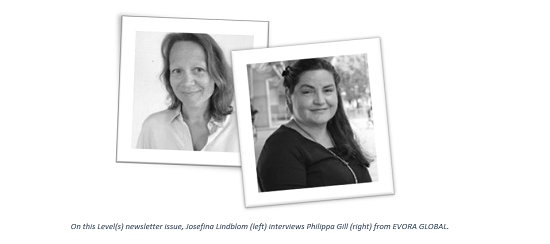
Josefina: From your experience with this tool so far, how do you see Level(s)?
Philippa: Level(s) is an escalator, a virtual ‘travellator’ on which to start and progress the journey towards better buildings. By this, we mean buildings that are better for those who occupy them, as well as have a low impact and hopefully even, one day, contribute positively to the environment.
Josefina: That is certainly what we are working for! From all your years in the property development sector, what do you see as the main motivation for this group to adopt Level(s)?
Philippa: Level(s) provides a holistic approach to the measurement, management, and assessment of real estate. It has been honed into its current form by some of the most experienced practitioners in the industry and academia. From a practical point of view, it is an agnostic framework, in that it does not draw indicators from certification tools, but rather is based on methodologies such as ISO/BS-Standards that are already widely available. It also provides a coherent methodology by which you can evaluate both a single asset and a whole portfolio, and then compare them and their progress.
Most importantly for me, investors and property owners could be motivated to adopt Level(s) because it enshrines whole life cycle thinking throughout and provides a clear pathway towards a low carbon real estate market.
Josefina: So, if I would ask you for a single sentence to convince people in your sector to adopt Level(s), what would it be?
Philippa: Level(s) allows any property owner or manager to begin the journey to a more sustainable market at whichever point of the journey they are currently at; it then guides the users to use more advanced scenarios, and deeper investigations, ensuring that their journey continues.
Josefina: Excellent, we will definitely remember to use that argument. You were also involved in the Horizon 2020 project HOUSEFUL, could you tell us about that project and how it relates to Level(s)?
Philippa: HOUSEFUL focuses on delivering a circular economy for the housing sector, aiming to develop and demonstrate an integrated systemic service with circular solutions for the housing value chain.
The HOUSEFUL project has four demo-sites in Austria and Spain. The projects that are underway will, to me, provide the technical evidence of how whole life cycle strategies and human health & wellbeing factors can be implemented across the sector. They are the embodiment of the macro-indicators which Level(s) enshrines.
Josefina: Sounds very promising, indeed. What were the key takeaways of the Level(s) project?
Philippa: The project included a pilot project over the summer of 2019 to put all those years of debating, drafting, and revising into practice! One experience worth highlighting was being in a room with over 100 senior academics to debate the technical details within Level(s) – that was an impressive coming together of some of the best minds across the industry. It was a pleasure to be a part of it.
Josefina: Last but not least...is the world ready for Level(s)?
Philippa: Not only is the world ready, but the timing is perfect. Combined with the EU Taxonomy, Level(s) – and its escalator framework – is arriving at the perfect moment.
Josefina: Thanks a lot for your time, Philippa, and your insights!
Philippa: Thank you Josefina – I am looking forward to the Level(s) launch!